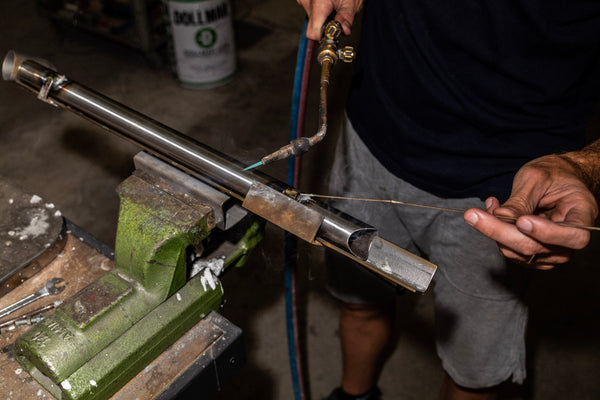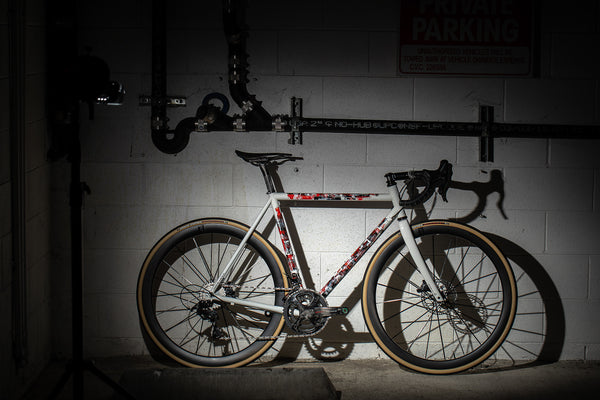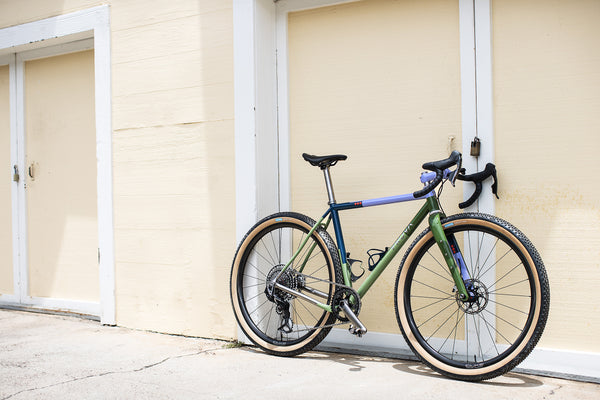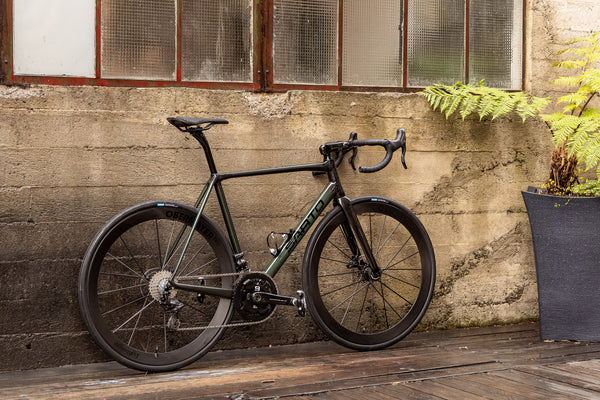
Going Low
To be honest, I was a bit of a late bloomer to the whole wide range craze. Coming from a cyclocross background, I could never be bothered to reconfigure my bike for switching between laps on the cross circuit and long days out on the trail. A 44t ring with a 10-36t cassette was what I rode no matter what. Stubbornly, I'd just grunt my way up the steepest slopes of Marin. When I first hopped on a bike with a 1-1 climbing ratio it was a bit of a revelation. Suddenly I could simply just spin up any climb. Then, when I tired out a bike with a Sram Mullet 10-50t cassette, my mind was absolutely blown. Climbing while staying in the saddle was now a possibility, maintaining a reasonable cadence was a breeze, and I was no longer fighting tooth and nail to hang on to traction climbing up loose o technical terrain. Just like that, I became a full fledged believer in the low range for gravel.

With my recent-ish adoration for that low end, you'd think it would be a no brainer for a gravel hill climb, right? While that low range is great, it does come with a compromise. The gear jumps are a bit more jarring than on a traditional road set up. So when you're trying to lock into a cadence, a single shift can throw you off. This is usually a non issue for me on general gravel riding as I much prefer the simplicity of 1x and really appreciate that low end when I've got multiple big climbs to conquer. But when it comes to getting up a single climb as fast as possible, that chill low gear isn't necessarily the most important factor.
Tight and Precise
While 1x systems are increasingly popular, there's still plenty benefit to the a 2x system, especially for a race bike. In the case of my Mosaic, the 10-33 range out back still covers a lot of ground, and with twelve cogs stacked in there the jumps between gears are relatively tight. Plus, the benefit of a another chainring for extended high range. Those tight changes between shifts can be really critical to staying locked into a target power over micro changes in terrain and pitch.

The obvious downside here is the lack of low range. My bike does bottom out at 1-1. It is a pretty reasonable climbing gear, but not quite as low as my GRX set up, and not nearly as low as what can be achieved using a Sram 1x Eagle cassette with the 10-52t. There's no comparison there for having a pure crawl ratio, but is that truly necessary for our TT?
Realizations on the Course
Our Dirt East Peak TT course is a challenging one, but getting to the top isn't a super human feat. There are no 20% walls to crawl up and a significant portion is a rolling traverse. While there are technical encounters with roots and rocks, they're all relatively easy to navigate around.

The beginning of Deer Park hits you with the most sustained steep effort. Having adequate low gears can make it easier to keep your effort in check without burning too many matches right out of the gate. On my Open, I can climb it no problem in the saddle at a pretty relaxed pace. While it is steep, it can still be done on a taller gear.

On one of my trial runs, I actually had a shifting issue that left me stuck in the big ring on my Mosaic. By no means is 46x33 an ideal gear for sending it up this climb, but I had to get out of the valley anyway so I figured I might as well give it a go. Somehow, I managed to get all the way up to Pantoll without needing to dismount and push. Believe it or not, it actually wasn't even that slow. But one thing is for sure, it left my legs absolutely fried for stage two.
Up on the second half of stage one, the incline is far less of a grind. With the exception of one final stretch out of the woods up to the Coast View clearing, you can motor up the hill using just the middle gears of the cassette. From there things get fast, and hitting the pavement to the ranger station you can even throw it into the big ring if you've got one.

Starting stage two it's once again fast pavement and high speed until you hit the Stagecoach dirt. On these chunkier sections, I find myself shifting constantly trying stay settled in an effort while transitioning back and forth from smooth to rocky terrain, but generally right around the middle of the cassette. Turning up to Railroad the pitch does increase, but it's still fairly modest and I doubt it would leave most riders seeking an especially low cog.
The final pavement stretch up to the parking lot is arguably the most challenging part. It's steep, it's brutal, and admittedly a pretty terrible way to finish a big effort. If you've paced yourself correctly, you'll probably be attacking this with an all out sprit, so your gear range wont be of much consequence. If you're cracked though, you'll surely be hoping you have a 52t cog to cary you to the line.
The Verdict
After several trials up the climb on the different bikes, one did indeed stand out to me. Despite it being a hill climb, I found the 2x set up on my Mosaic to be the favorable choice. While there are a few sections where it'd be nice to have a sub 1-1 gear, I feel they're short and manageable enough to push the bigger gear and have the tighter shifts to stay locked in through everything else.
I also find that for myself, eliminating the lower gear helps me stay committed to the effort of the time trial. A more disciplined rider than myself will simply adhere to their target power, but for me it's easier to keep up the pace when I don't have the option to take it too easy.
Now, this all could go out the window if we get surprise rain and the course is a slip and slide. If that's the case, you'll definitely want a lower range to not spin out and loose grip in the spots where things are particularly steep.

Of course every rider is different, so your approach and gearing may differ from mine. To those of you who are regulars around here in Marin, what gearing do you find is the best match for the climb? Let us know down in the comments. We're just over a week away and we're looking forward to seeing your efforts up the Dirt East Peak TT!







Back to Journal